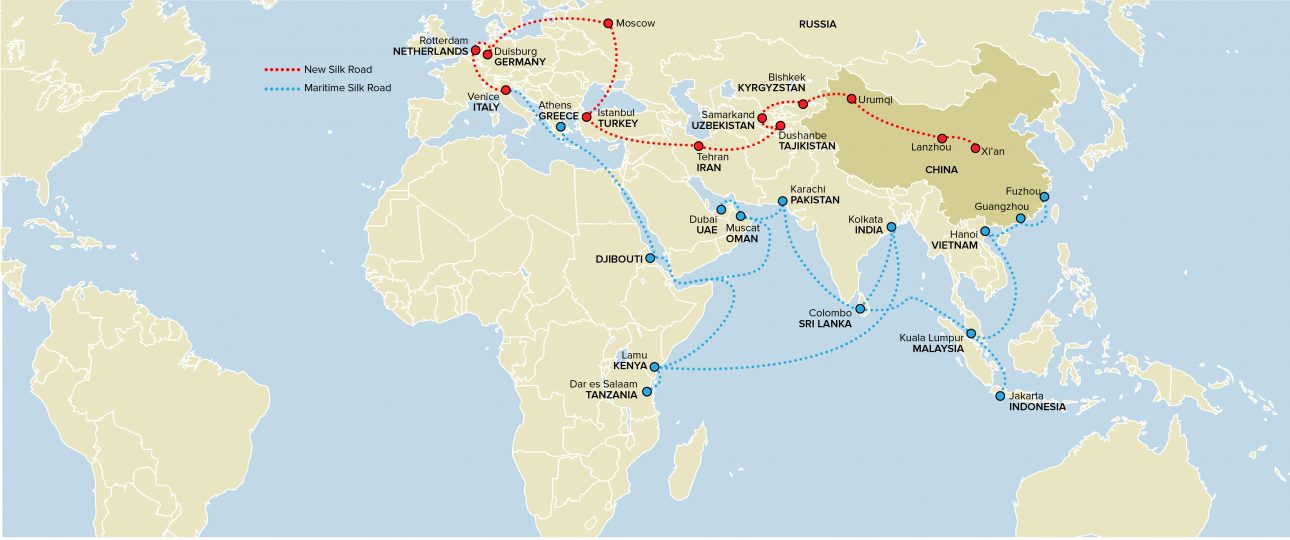About the Silk Road
Welcome, fellow adventurers! Today, we are embarking on a journey along the legendary Silk Road in China. This ancient trade route, stretching over 4,000 miles, has captured the imagination of travelers for centuries. Join me as we explore the fascinating history, breathtaking landscapes, and vibrant cultures along this iconic path.
The Historical Significance
The Silk Road holds a significant place in history, serving as the main trade route between East and West for centuries. It facilitated the exchange of goods, ideas, and cultures between China and the Mediterranean, connecting civilizations and shaping the world as we know it today. The route got its name from the lucrative trade in Chinese silk, which was highly sought after by merchants from far and wide.
As we journey along the Silk Road, we will encounter ancient cities, archaeological sites, and remnants of the once-thriving trading posts. These historical landmarks provide a glimpse into the rich tapestry of human civilization that flourished along this route.
Exploring the Silk Road
Now, let’s dive into the mesmerizing destinations that await us along the Silk Road:
1. Xi’an
Our adventure begins in Xi’an, the ancient capital of China. This city served as the starting point of the Silk Road and boasts a wealth of historical sites. The Terracotta Army, a UNESCO World Heritage site, is a must-visit attraction. Marvel at the thousands of life-sized terracotta soldiers, horses, and chariots that were buried with Emperor Qin Shi Huang to protect him in the afterlife.
Don’t miss the chance to explore the bustling Muslim Quarter, where you can savor delicious street food and immerse yourself in the vibrant local culture. And of course, a visit to the iconic Xi’an City Wall is a must. Rent a bicycle and cycle along the ancient fortifications for panoramic views of the city.
2. Dunhuang
As we venture further west, we arrive at Dunhuang, a desert oasis steeped in history. The Mogao Caves, also known as the Thousand Buddha Grottoes, are a sight to behold. These ancient Buddhist caves are adorned with intricate murals and sculptures, offering a glimpse into the spiritual traditions of the region.
For an unforgettable experience, embark on a camel ride through the mesmerizing Singing Sand Dunes. Feel the soft sand beneath your feet and listen to the haunting melodies created by the wind as it passes through the dunes.
3. Kashgar
Our journey takes us to Kashgar, a vibrant city nestled in the westernmost part of China. Here, you will find a unique blend of Chinese, Central Asian, and Middle Eastern cultures. Explore the bustling Grand Bazaar, where you can haggle for traditional handicrafts, spices, and vibrant textiles. Don’t forget to sample the local cuisine, which is a delightful fusion of flavors from various cultures.
A visit to the Id Kah Mosque, one of the largest mosques in China, is a must. Immerse yourself in the peaceful atmosphere and admire the intricate architecture of this sacred place.
4. Samarkand
As we venture outside of China, we arrive in Samarkand, a gem along the Silk Road in Uzbekistan. This ancient city is a UNESCO World Heritage site and boasts stunning architectural wonders. The Registan Square, with its majestic madrasas adorned with intricate tilework, is a sight that will leave you in awe.
Make sure to visit the Bibi-Khanym Mosque, a masterpiece of Islamic architecture, and explore the colorful Siab Bazaar, where you can immerse yourself in the vibrant local culture.
Best Time to Visit
The best time to embark on a Silk Road adventure is during spring (April to June) and autumn (September to November). During these seasons, the weather is pleasant, and you can avoid the scorching heat of summer or the bitter cold of winter.
How to Get There
Getting to the Silk Road is relatively easy, thanks to the well-developed transportation network in China. Most travelers choose to fly into Xi’an, which has excellent international and domestic flight connections. From there, you can take a train or hire a private car to explore the different destinations along the Silk Road.
Local Transportation
Once you’re on the Silk Road, there are various modes of transportation to choose from:
- Trains: China has an extensive railway network, making train travel a convenient option. High-speed trains connect major cities along the Silk Road, allowing you to travel comfortably and efficiently.
- Buses: Buses are a popular choice for traveling shorter distances between cities and towns. They offer a cost-effective way to explore the region.
- Taxis and Rideshares: Taxis and rideshare services are readily available in most cities along the Silk Road. They are a convenient option for getting around within a city or for short trips.
Summary of Facts:
- The Silk Road was an ancient trade route that connected China and the Mediterranean.
- Xi’an served as the starting point of the Silk Road.
- The Terracotta Army is a must-visit attraction in Xi’an.
- The Mogao Caves in Dunhuang showcase ancient Buddhist art.
- Kashgar is known for its vibrant Grand Bazaar and unique blend of cultures.
- Samarkand in Uzbekistan is home to stunning architectural wonders.
- The best time to visit the Silk Road is during spring and autumn.
- Xi’an is a convenient entry point to the Silk Road.
- Trains, buses, taxis, and rideshares are available for local transportation.
So pack your bags, fellow travelers, and get ready to embark on a once-in-a-lifetime adventure along the Silk Road. Let the ancient trade route guide you through a world of history, culture, and natural beauty. Whether you’re a history enthusiast, a nature lover, or a cultural explorer, the Silk Road has something for everyone. Bon voyage!




